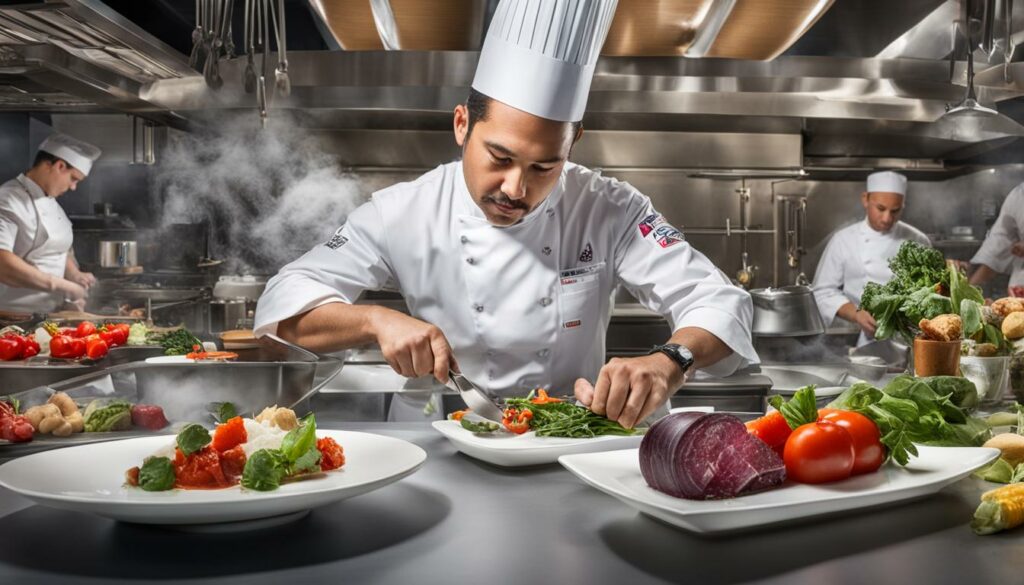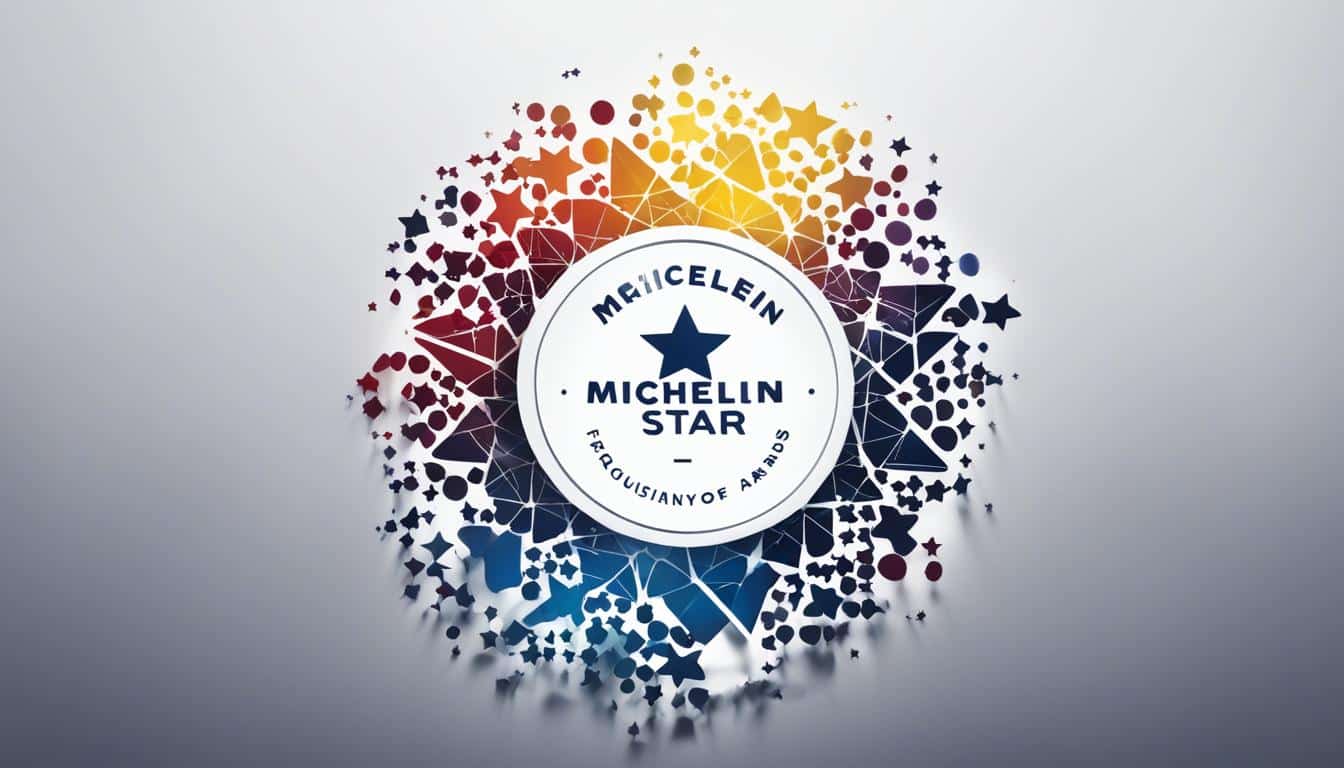Michelin stars are a prestigious recognition of culinary excellence. Awarded to restaurants for their outstanding cooking, these accolades hold significant prestige in the culinary world. But have you ever wondered how often Michelin stars are awarded? Let’s delve into the frequency of Michelin star awards and gain insights into the Michelin Guide’s evaluation process.
Key Takeaways:
- Michelin stars are awarded annually based on rigorous evaluations conducted by the Michelin Guide.
- The evaluation process remains secretive, but factors like ingredient quality, mastery of flavors, and consistency are believed to be important criteria.
- Michelin stars range from one to three, with three being the highest honor a restaurant can achieve.
- Approximately 120 anonymous Michelin inspectors visit restaurants multiple times to ensure consistent quality.
- Earning a Michelin star is a testament to a restaurant’s dedication to providing exceptional dining experiences.
The History of Michelin Stars
The Michelin Guide, known for its prestigious Michelin stars, has a fascinating history that dates back over a century. Let’s delve into the origins and evolution of this renowned restaurant rating system.
The Michelin Guide was initially created in 1900 by the Michelin tire company to boost car usage and, consequently, tire sales. The guide provided valuable information for motorists, including maps, tire repair instructions, and lists of hotels and restaurants.
It wasn’t until 1926 that the Michelin star system was introduced, aiming to recognize outstanding culinary achievements. The original concept included a single star awarded for excellent cooking.
In 1931, the guide underwent a significant transformation, establishing the iconic three-star hierarchy. One star represented high-quality cooking, two stars designated excellent cooking worth a detour, and three stars symbolized exceptional cuisine worth a special journey.
Over the years, the Michelin Guide expanded its coverage to encompass more countries and regions, establishing itself as one of the most reputable and influential restaurant rating systems worldwide.
Today, the Michelin star continues to serve as a prestigious accolade for exceptional culinary establishments, showcasing the highest levels of talent, creativity, and culinary craftsmanship.
The Life of a Michelin Inspector
Michelin inspectors are unsung heroes in the world of gourmet dining. These anonymous restaurant inspectors play a crucial role in the awarding of Michelin stars, maintaining the integrity and prestige of the Michelin Guide.
There are approximately 120 Michelin inspectors worldwide, tasked with evaluating restaurants and determining their deserving of the coveted Michelin stars. These inspectors remain anonymous to ensure objectivity in their assessments.
Inspectors visit restaurants incognito, often dining alone or in pairs, to experience the true essence of the establishment. They meticulously evaluate the quality of the food based on the Michelin Guide’s established criteria.
After each meal, inspectors meticulously document their findings in detailed reports. These reports form the foundation of the evaluation process and guide the final decision to award or maintain Michelin stars.
The life of a Michelin inspector is far from ordinary. These dedicated individuals spend three out of four weeks on the road, traveling from one restaurant to another, and staying in different hotels each night.
The identity of Michelin inspectors is shrouded in secrecy. If a restaurant suspects an inspector’s presence, they may cancel the booking and reschedule for a later date. This ensures that inspectors can continue their work undisturbed and maintain the integrity of the evaluation process.
The daily routine of a Michelin inspector involves seeking out exceptional culinary experiences and upholding the rigorous standards set by the Michelin Guide. Their passion for gastronomy and commitment to excellence make them invaluable contributors to the food industry.
The life of a Michelin inspector is a calling, a journey of discovery, and a commitment to promoting culinary excellence. Their anonymous work behind the scenes ensures that the Michelin star system remains a symbol of distinction and a beacon for food lovers around the world.

How to Earn a Michelin Star
Earning a Michelin star is a prestigious achievement that showcases a restaurant’s culinary excellence. While the exact scoring system used by Michelin inspectors is a closely guarded secret, there are some aspects of the evaluation process that have been revealed.
Frequency of Inspections:
Michelin inspectors typically visit restaurants approximately once every 18 months, except when a restaurant is being considered for gaining or losing a star. In such cases, the frequency of inspections may increase.
Number of Inspections:
A Michelin one-star restaurant will generally receive four visits before it can gain a second star, while a two-star restaurant must be inspected ten times before it can achieve the ultimate honor of three stars.
Evaluation Focus:
The evaluation process focuses primarily on the quality of the food, but other factors such as service, decor, and location may also be considered. Michelin star assessment criteria include:
- Using quality ingredients
- Mastery of flavors and cooking techniques
- Showcasing the chef’s personality in the food
- Providing value for money
- Maintaining consistency in the food and dining experience
These criteria play a crucial role in determining whether a restaurant deserves to earn a Michelin star.

Conclusion
The Michelin star system is a prestigious recognition of culinary excellence. It rewards restaurants that excel in providing exceptional dining experiences to their patrons. Michelin stars are awarded based on various criteria, including the quality of ingredients, mastery of flavors and techniques, showcasing the chef’s personality, value for money, and consistency in the dining experience.
The evaluation process is rigorous and carried out by anonymous Michelin inspectors who visit restaurants multiple times to ensure consistent quality. These inspectors play a crucial role in maintaining the integrity of the Michelin star system. Earning a Michelin star is a testament to a restaurant’s dedication and commitment to providing outstanding culinary experiences.
Michelin stars hold significant prestige in the culinary world and are highly sought after by chefs and restaurateurs worldwide. They serve as a mark of excellence and recognition for fine dining establishments. The Michelin Guide, along with its star system, continues to be a trusted source for recommendations in the realm of fine dining, promoting culinary excellence across the globe.
FAQ
How often are Michelin stars awarded?
Michelin stars are awarded annually.
How frequently does Michelin review restaurants for star rankings?
Michelin inspectors visit restaurants approximately once every 18 months, except when a restaurant is being considered for gaining or losing a star.
What is the evaluation process for Michelin stars?
The evaluation process for Michelin stars is a closely guarded secret. Inspectors visit restaurants multiple times to ensure consistent quality, focusing on factors such as the quality of ingredients, mastery of flavors and techniques, showcasing the chef’s personality, providing value for money, and maintaining consistency.
How many Michelin stars can a restaurant receive?
Michelin stars range from one to three. Three stars represent the highest honor a restaurant can achieve.





